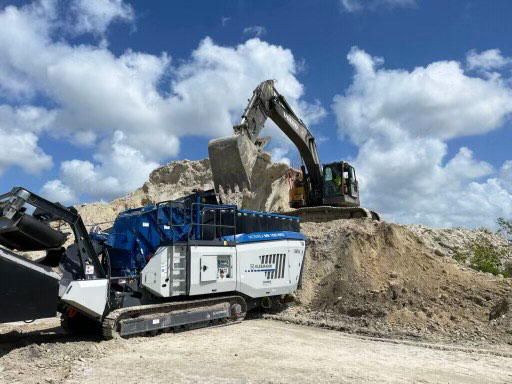
Saving money by the ton is the idea behind a plan to quarry road rock and more within Indian Trail Improvement District boundaries, according to ITID staff.
“We’re always trying to see how to stretch dollars as much as possible,” said Rob Robinson, ITID’s associate executive director and chief construction officer, this month.
However, Robinson said the recent sharp increase in the price of road rock purchased from Palm Beach Aggregates — from $12 per ton to $20 per ton — makes it almost a necessity for the district to find another source.
The source could be the 120-acre M-2 Impoundment Area off 180th Avenue North, on the far west side of the district, he said during a March presentation to the ITID Board of Supervisors. Board members asked Robinson to come back with more details. He is expected to pitch the plan again at the supervisors’ Wednesday, May 21 meeting.
In fiscal year 2025, ITID purchased 28,000 tons of road rock at a cost of $336,000 to maintain its 260 miles of dirt roads. That same tonnage in fiscal year 2026 is expected to cost $560,000 if purchased from Palm Beach Aggregates. While there are other less expensive suppliers, the distance from ITID would make transportation costs prohibitive, Robinson said.
ITID employees have been excavating at the M-2 Impoundment for some 20 years, but there has never been sufficient equipment or manpower to quarry enough rock to meet the district’s needs, said Robinson, who has been with ITID for nine years.
Given the necessary equipment and an additional two or three employees, he said his team could excavate 55,000 tons of road rock per year over four years at a total cost of $9.60 per ton, saving the district $1.69 million.
The team also would be quarrying and separating coarse aggregate (currently $38 per ton), fine aggregate ($32 per ton), No. 1 fill ($13 per ton), No. 2 fill ($6 per ton) and washout/stabilizer ($13 per ton) — all of which are used to maintain ITID canals, swales, rights-of-way and more, Robinson noted. Thus, the total saving would be $2.9 million over four years.
“It appears we have a gold mine under our feet,” Supervisor Richard Vassalotti said after touring the M-2 site. “It seems like a no-brainer.”
Robinson’s plan would require the acquisition of an excavator, crusher/stacking conveyer, two rock trucks and a 12-inch pump, mostly under a 36-month lease-to-buy agreement costing approximately $1.3 million.
If the project were extended and expanded to include older areas of the M-2 or the planned M-1 Impoundment — also known as “the 640 acres” — it could save ITID $5 million in road rock alone over the next 10 years, Robinson said.
The plan also will benefit residents in the area during major rain events, ITID Executive Director Burgess Hanson added.
“It helps everyone in the M-2 Basin because it will allow more storage in the M-2 [Impoundment], which means more water can be discharged into the M-2 Canal,” Hanson explained.
Put simply, Robinson said, for every cubic yard of rock excavated from the impoundment, that’s another cubic yard of water it can hold.
At the March meeting, Supervisor Betty Argue expressed concern that added excavation would create excessive truck traffic on 180th Avenue North, disturbing nearby residents.
However, Robinson noted that 180th already is the main route for trucks going to and from the M-2 work area where ITID stores much of the materials used in everyday maintenance of district roads and canals, and that if approved, the district does not plan to operate around the clock, seven days a week.
Hanson said Argue did raise a legitimate question, however, about how residents of the M-2 area would be compensated for use of the aggregates outside their taxing unit. He said staff is working on a compensation plan, though it would not be in the form checks mailed out to residents.
“Saving millions of dollars certainly is appealing,” ITID President Elizabeth Accomando said. “I don’t see any negatives.”
Work at the M-1, turning it into a water retention area, is expected to begin within four years. Under those 640 acres is a 10-foot-thick layer of rock to be excavated, according to soil engineers. That is approximately 6 million tons with a value of $130 million, according to Robinson’s report.
While much of the excavated rock would be used for district roads, canals and levee restoration, “there is the potential for some serious gain” from sales of surplus rock to other entities, Accomando said. That gain could “save a lot of tax dollars,” especially for residents of the M-1 Basin, she noted.
Approving the plan “just makes dollars and sense,” Robinson said. “It’s investing in the future.”








Selling the rock to outside companys will cause way too much traffic on 180th and sycamore, and seminole pratt. Plus you wanna put a fire station on 180th and sycamore. Too much density
Also sinkhole risk from disturbing the eart at such depths. Bad idea